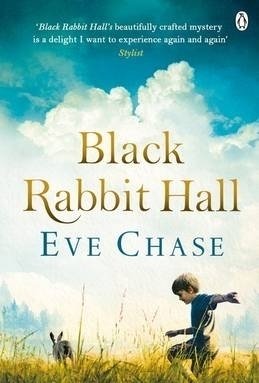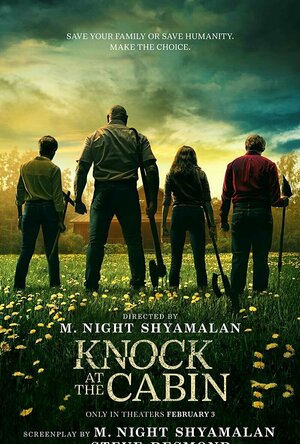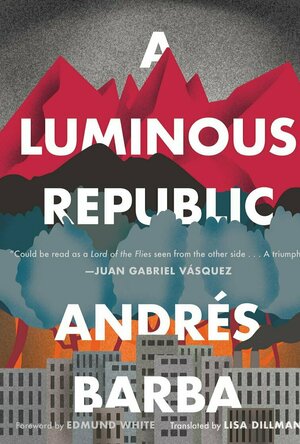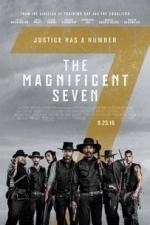Heather Cranmer (2721 KP) rated Getting A Life, Even If You're Dead (No Going Back, #1) in Books
Jun 7, 2018
I've been wanting to read this book for awhile. I love books with ghosts in them. I had high hopes for this book, but it just turned out to be an mediocre read.
Right away, the title of this book suggests that it's not going to be a scary book or one that takes itself too seriously. I do like the title, and I found it very interesting.
I like the cover. I think it suits a young adult book, and the cover fits with the setting of the book.
The world building was alright. I just felt that the ghosts were able to do too many things such as they were able to manipulate objects in the living world. They could move things, open doors, log on to Facebook, etc. It was the logging on to Facebook that really got to me. The ghosts even had their own Facebook pages! They could even write on others' Facebook profiles. I just think that because the ghosts were able to do too much, they would've been discovered in a real world setting.
The pacing was just alright. It wasn't too fast, and it wasn't too slow. It was just kind of there. I found myself not really in a rush to find out what would happen next.
I did enjoy the idea of the plot. I like how Kendra is able to see her dead best friend and then realizes she can actually see ghosts. I like how there was a mystery incorporated in the book. There was also romance going on with all the characters. However, I just felt as if there was too much going on with the plot. Perhaps this book would've been better without the romance especially the romance between Loic and Amber. I also felt as if the mystery about how Loic died wasn't that big of a mystery at all. I had correctly predicted the mystery surrounding Loic's death from the very beginning. There is a small plot twist towards the end, but it's not a major one. The author does leave the ending of this book open for the next book in the series, but I think this book could work well as a stand alone.
I didn't really connect with any of the characters, but I did enjoy them. My favorite character was Amber. To me, she felt the most realistic. It was good to see the wide range of emotions she was feeling throughout the book. I enjoyed her zest for life (even if she was dead). I also liked Pierrot. He seemed like a sweet boy, and it was clear how much he loved his brother. As for Kendra, I didn't like the way she treated her mother. I found her to be a bit disrespectful and a bit spoiled. I also didn't really care for Loic. To me, he came across as very whiny and a little bit selfish. I get that he just died and wanted answers, but it's like he just wanted everything to happen all at once. He was a very impatient boy.
I felt that the dialogue fit in more with a middle grade book rather then a young adult book. The way the characters thought and spoke made them seem like they were around thirteen or fourteen as opposed to being around seventeen years old. I also felt the dialogue didn't fit in with a modern day story. I can understand Amber using words that people don't really say anymore being as she died in the 1980s (although she's been a ghost, so surely she would've picked up the modern day lingo), but even Kendra used odd words such as the word "crimmers" (or something to that effect) when she was shocked about something. There's not really any violence, but there is some swearing. There's also no sexual references besides kissing.
Overall, Getting a Life, Even If You're Dead by Beth Watson is just an alright read. It's not great, but it's definitely not a bad read by any means. I believe that if the ghosts were a bit more believable and the book was written in more of a young adult tone, it could've been much better. I probably will read the next book in the series simply because it will focus on Amber.
I'd recommend this book to those aged 13+ who are like the mystery genre but also like their books with a little bit of romance.
(I received a free paperback of this book from the author in exchange for a fair and honest review).
The story is narrated by one of the 50 mytholgical mermaids, Sirena. She lives with ten of her sisters on an island where they are protected and guided by three guardian birds. The sole purpose of Sirenas and her sisters existence is to somehow make human males fall in love them so that the mermaids can become immortal like their ancestors. They live simple lives, dressing up in starfish and pearls and singing to lure ships towards their island where their ship will wreck on the reef just offshore. What makes Sirena different than her sisters, however, is her conscience. Whereas her sisters are only concerned with becoming immortal, Sirena actually cares about the welfare of the men whose lives they put in danger.
When the story begins, Sirena is preening herself before singing to lure not one, but three ships to her sisters island. The men on the ships fall under their spell and two of the three ships crash upon the reef. Most of the men die because they do not know how to swim. While the ones who know how to swim make it safely to shore, the mermaids try to save as many of the others as they can. Only eleven men initially survive. They eventually die because of lack of resources on the island, but not before they beat one of Sirenas sisters, Cecilia, to death for trying to save a drowning sailor.
Shortly after, Sirena runs away to the island of Lemnos to escape the life she has been subjected to. There, she tries to help heal Philoctetes who has been bitten by a serpent sent by Hera. From there, their relationship blossoms and they come to love each other despite their differences, including Sirenas newly acquired immortality. Eventually however, Odysseus comes to obtain Hercules bow and arrows from Philoctetes so that the Greeks can win the Trojan War. The book ends with Philoctetes leaving with Odysseus, leaving Sirena on the deserted island of Lemnos.
This book completely crushed my heart. All in all, the book was actually pretty graphic for what I thought was an independent reader novel. Whenever Cecilia is killed by the sailors, Napoli gruesomely describes the mermaids smashed in face. Sirena makes multiple references to their beautiful breasts. While Napoli had enough decently to leave out any sex scenes, it is blatantly alluded to.
The majority of the novel is Sirena and Philoctetes bonding and building their relationship. Napoli takes us through the two learning about each other, bantering playfully, and falling in love. Only to rip them apart. It was so anticlimactic and soul-crushing, I almost started crashing.
All in all, it was a great novel. Despite being written in first person, it was expertly written. I love the simplicity of Sirenas thinking. It is clear that she lacks any education beyond her island world. Reading about Sirena and Philoctetes developing relationship was enchanting.
Definitely worth the heart break at the end.
Emma @ The Movies (1786 KP) rated Knock at the cabin (2023) in Movies
Feb 28, 2023
Eric, Andrew and Wen, take an idyllic trip to a peaceful cabin. But that peace is shattered when the knock-off Guardians of the Galaxy show up.
First thing I want to say, despite it being an M.NS film, it doesn't have the usual dubious tangent in it. I suspect we can put this down to the fact it's based on source material, namely The Cabin at the End of the World by Paul Trembley.
I wanted to see what I could talk about without spoiling the film at all. The synopsis is fairly vague, but intriguing. Then I rewatched the trailer, and from that, I could probably talk about the majority of this hour and forty minute film. The latter basically telling everything makes me wonder how it wasn't spoiled for me going in.
Knock at the Cabin boils down to a look at personal faith in the face of terror, for those on both sides of the incident.
While the majority of the story is set in the isolated cabin, we're shown flashbacks to Eric and Andrew's life. Heartbreak, trauma, joy, vengeance, it has been filled with so much, and that being peppered into the main story really helps to shape how we see their separate personalities and reactions.
The acting is an interesting one. The nature of the situation means that everyone is feeling a massive cycle of emotions... and somehow that works.
The group dynamic of Eric, Andrew and Wen was incredible, with Jonathan Groff and Kristen Cui being the standouts. I don't know that I would have been on board with Ben Aldridge as Andrew if it hadn't been for the pairing with Groff.
Opposite them, we get an interesting mix of characters who are led by Leonard... I am so proud of Dave Bautista right now, this was an amazing performance. I love him doing comedy (My Spy is still probably my favourite), but this was a great change of pace, he channels the character's profession into the situation so well... 5 stars for Bautista, no notes.
The other three bring up the rear with some chaotic energy. I just cannot unsee Ron Weasley though. I know he's been in other things since then, but I haven't happened across any of them, and as such, he was entirely distracting. It wasn't a bad turn, but it did overwhelm Nikki Amuka-Bird and Abby Quinn's roles for me.
M. Night Shymalan does his cameo and throws in his usual colour references for the regular viewers. I won't go into that, as it definitely constitutes spoilers, but it might not be something that's common knowledge, so absolutely worth a Google afterwards.
IMDb lists Knock at the Cabin as horror, mystery and thriller. Thriller, check. Mystery, a stretch. Horror, in my opinion, completely inaccurate. Having "horror" over everything about this film put people off watching it, and that's a great shame.
I was left with one big thought after seeing this, and that's that somewhere, in a remote cabin, a group of people have been playing this game for the last 3 years.
Originally posted on: https://emmaatthemovies.blogspot.com/2023/02/knock-at-cabin-movie-review.html

Black Rabbit Hall
Book
One golden family. One fateful summer. Four lives changed forever. Amber Alton knows that the hours...

Weather Live.
Weather and Travel
App
Don't let bad weather take you by surprise! Whether it is cloudy, raining, snowing or even stormy...

Pinball HD: Classic Arcade, Zen + Space Games
Games and Sports
App
This unique table features pinball bumpers and targets, plus a color monitor where you can take on a...

Newsbeat Radio
News and Magazines & Newspapers
App
It's like audio books - for news articles. Every day, we hand-pick insightful news articles from a...

LANDSCAPE DESIGN Magazine
Photo & Video and Magazines & Newspapers
App
暮らしの景観・環境をデザインする。 Designing environment and scenery for public. ...
Hadley (567 KP) rated A Luminous Republic in Books
Aug 13, 2020
We first meet our main character, whose name is never given throughout the entire story, when he and his family are moving to San Cristobal because of a job opportunity. He works for the Department of Social Affairs, and has just received a promotion because he has come up with a very successful plan: " I had developed a social integration program for indigenous communities. The idea was simple and the program proved to be an effective model; it consisted of granting the indigenous exclusive rights to farm certain specific product." Our main character believes that this plan will bring the farmers more money. And he is more than happy to go back to the city where he fell in-love with his now wife, Maia - - - a violin teacher who had a daughter before meeting him, who he calls 'girl' throughout the story because she is also named Maia.
While on his way to work one day, our main character comes across one of the unknown children of the jungle, which shakes him up a bit. The unknown jungle children were known to beg at street lights for money and food, but one of the grimy, frizzy-haired boys stared the man down, only to end up giving him a very wide smile. "The boy's smile unsettled me because it confirmed that there had been a connection between us, that something had begun in me ended in him." Pretty soon after, he begins to notice these unknown jungle children running around a lot more, and that sometimes their intentions are not always innocent - - - he and the 'girl' witness an elderly woman get robbed of her groceries by a group of these children in the middle of the street in a subtle but violent way.
The unknown jungle children soon begin to rob several people,and when a police officer is killed while being attacked by them, the Mayor and the police want the children off the streets as soon as possible. Working with our main character, the former and the latter try to figure out the strange language these children use, whom may be the leader among them, and where they disappear to at night. Since the story is being told from our main character's past, the book is written like a True Crime story, with names of professionals and such being cited throughout. Our main character brings up a woman, who was a young girl at the time of the jungle children's invasion on San Cristobal: Teresa Otano, who happened to 'publish' her diary from that time, which gives readers insights into the jungle children: "Often, some of the thirty-two [jungle children], on their nightly journey back to the jungle, congregated next to Teresa's house, on one corner of Antartida Avenue. At first, Teresa, enthralled, simply makes notes, logging the days on which they appeared, whether there were three, four or five of them, what they were wearing, and so forth. She establishes patterns and identifies a few of the kids..." our main character explains to the reader.
But soon, the children cross a line that they can never come back from; being told by our main character from the view of surveillance video tapes, he describes to us that the jungle children entered a supermarket after an incident with a guard that works there, they block the entrance doors and begin to destroy items throughout the store, but the chaos quickly escalates, and two adults are murdered by the children - - - fear now holds the town in its grip, causing search parties to sweep through the dense jungle after the children fled.
But murder wasn't something new to San Cristobal, our main character explains to us that the suburbs of this area usually had a murder a week all year long, and that on the outskirts of the jungle, there were known spots for drug trafficking and assaults. What made the 'Dakota Supermarket' murders scare the town was that the residents' own children began to behave differently afterwards - - - they start to play a 'game' where they put their ears to the ground, believing that they can hear the jungle children talking to them. Our main character even walks in on the 'girl' playing this exact game. "For a second it was as if I were witnessing a ritual invented by a twelve-year-old girl, and I thought of how afraid my daughter must have felt when I found her in the bathroom that day. People often remark on the self-assured quality of the invocation, its instruction-manual tone, but I'd say that its intensity actually stems from what it dispenses: adult logic, a world that no longer serves. How could our children possibly have explained to us what they were doing? We weren't prepared for their world or their logic. Somewhere out there, underground, that dissonant sound was being sent, in code: down below, chaos. "
This phenomenon attracts the attention of money/fame seekers, which includes the Zapata children. Four siblings, ranging from the ages of five to nine, claimed that the jungle children were speaking to them through their dreams. They would make drawings from what they were told by the jungle children, but state that even they didn't know what the drawings meant. The media quickly jumped on them and put them in front of a camera, causing the family's home to be surrounded by civilians at all hours of the day and night. One night, the crowd outside becomes anxious, and breaks into the house, stealing not only the drawings from the Zapata children, but also the life savings of the family. At this point, the Zapatas had had enough, and retreat from the story altogether for reasons I won't disclose here. I can't give away much more of the book without ruining the story.
Barba's attempt at making a different kind of Lord of the Flies was done well, but the lack of emotion is felt throughout the entire story which makes the characters flat, especially our main character, who I didn't find likable in any such way. He calls a grieving woman a 'whore,' and he seems rude towards his family, especially his step-daughter.
A Luminous Republic is redeemed by is unpredictability, which is something that doesn't come along in fiction that often anymore. I enjoyed that the story was written like a True Crime novel, with fictitious documentaries, news reports and books. So, I would recommend this book to people who like True Crime and Mysteries.
Bob Mann (459 KP) rated The Magnificent Seven (2016) in Movies
Sep 29, 2021
Possibly on the basis that Trump has been given the Mexican’s a good bashing lately, the villain of the piece in this film is updated from Mexican bandit Calvera to Sacremento based land-snatcher and all round bad-egg Bartholomew Bogue (an expressionless Peter Sarsgaard). After ripping through some of the inhabitants of Rose Creek in a brutal pre-title sequence, widowed sharp-shooter Emma Cullen (Haley Bennett, “The Equalizer”) heads into the West on a recruiting mission for hired guns. She first recruits the bounty hunter Chisholm (sing “Chisum, John Chisum…”… no, sorry different Western) played by Denzel Washington. Washington matches Yul Brynner’s famous black outfit, and unlike Brynner is obviously able to finish off the ensemble naturally!
They recruit another six (who’d have thought it?) including wise-guy gambler Faraday (Chris “Guardians of the Galaxy” Pratt); famed confederate sniper Goodnight Robicheaux (Ethan Hawke); his nifty knife throwing Asian sidekick (but good for the Far East box office) Billy Rocks (Bjung-hun Lee, from Terminator: Genisys); and religious bear-of-a-man Indian-hunter Jack Horne (Vincent D’Onofrio, “Jurassic World”). After trying to whip the incompetent townsfolk into shape, and setting some Home-Alone style surprises, the stage is set for a showdown as Bogue whips up an army to re-take “his” town.
I like classic Westerns, with John Ford’s Rio Bravo being a particular favourite. In my view the problem with many modern Westerns is that they try too hard to shock (Tarentino’s recent “Hateful 8” was a case in point: a promising start ruined by gratuitous over-the-top violence). “The Magnificent Seven” doesn’t make that mistake, and while the squib-master and blood-bag boy are heavily employed throughout, nothing is too excessive: in fact, my view – and I don’t often tend in this direction – is that the censors rather over-egged the UK 12A rating on this one and could have gone with a 12. Director Antoine Fuqua has produced a film that is highly respectful of its heritage: perhaps to the point where many scenes might be deemed to be clichéd. But I personally warmed to that.
Denzel Washington was born to be in a Western like this and the emerging Chris Pratt does his star potential no harm by turning in a stellar performance adding both levity – with some whip-sharp lines – and screen presence in the role made famous by Steve McQueen. (Although no one comes close to the screen presence of McQueen…. Look up “real man” in the dictionary and his picture is there!) Also effective is Ethan Hawke in the nearest thing to the Robert Vaughan character in this film.
Where the adapted script by Richard Wenk and Nik Pizzolatto falters somewhat is in the motivations of the characters, which come across as superficial and unconvincing. (Perhaps “selling” was a whole lot easier in the Old West?) It is even unclear at the end of the film whether the survivors (and I hate to be the bearer of bad news, but the seven don’t all make it!) actually take their payment, or even a “share of the gold” that the town is sitting on. It makes for an unsatisfactory closure. The degree of racial harmony present in the film is also difficult to buy into, and the script could have made something more of this.
The film soundtrack marks the swan-song of the late James Horner, so tragically killed in a plane crash last year at the age of just 61. As the natural successor to the great John Williams and the late Jerry Goldsmith, Horner’s loss was a terrible one. The film is dedicated to him. Although the soundtrack was completed by Simon Franglen, there are flourishes of classic Horner, most notably in the first Rose Creek showdown scene. There is also a treat to the ears over the closing credits which is very welcome.
Although the film draws natural comparison with its 5* classic predecessor, this is a good film in its own right – a genuinely pleasant surprise. Perhaps its done well enough that we might get to now see a remake of “The Return of the Seven”. I hope so… “the Western is dead… long live the Western”!



